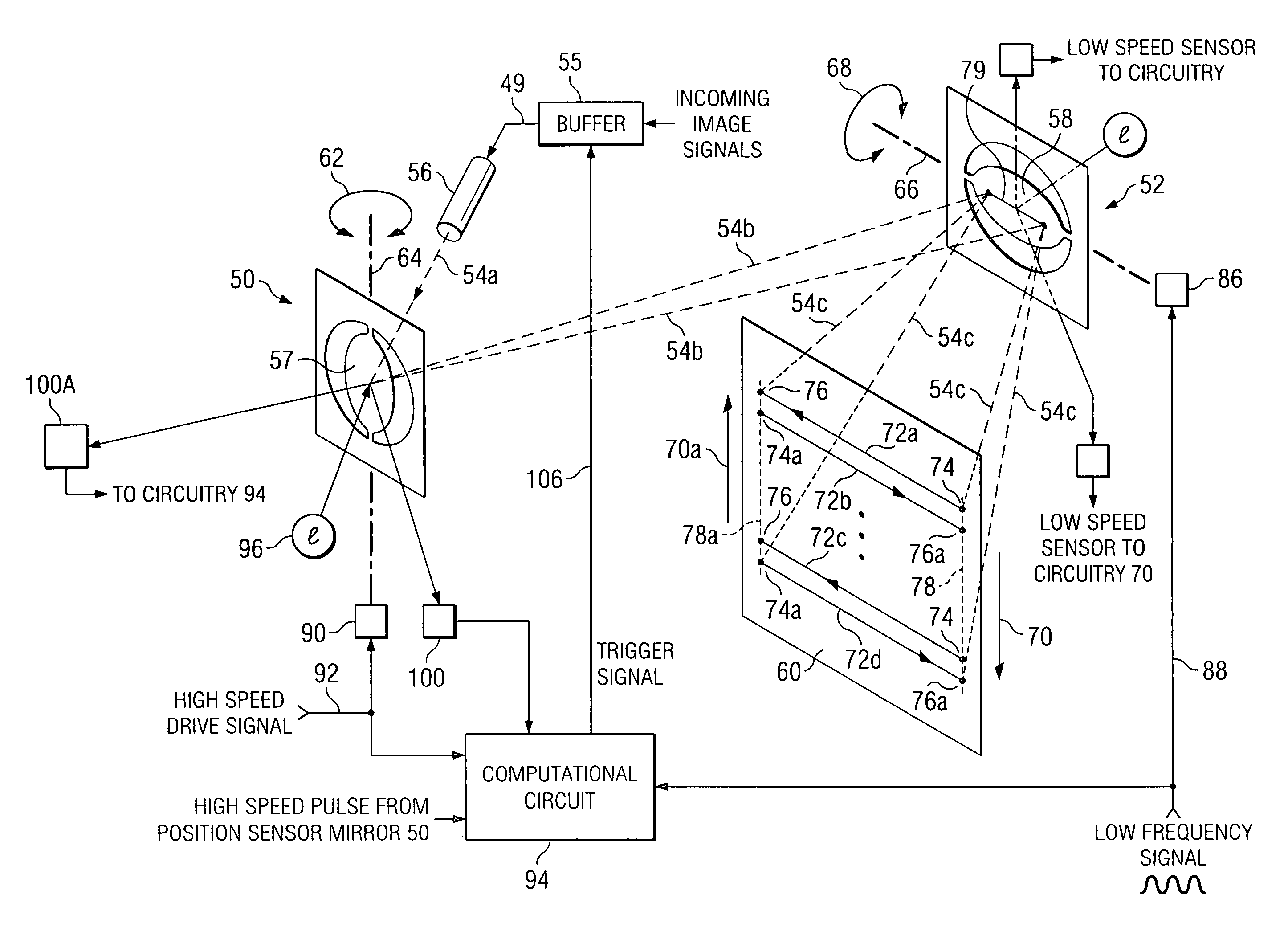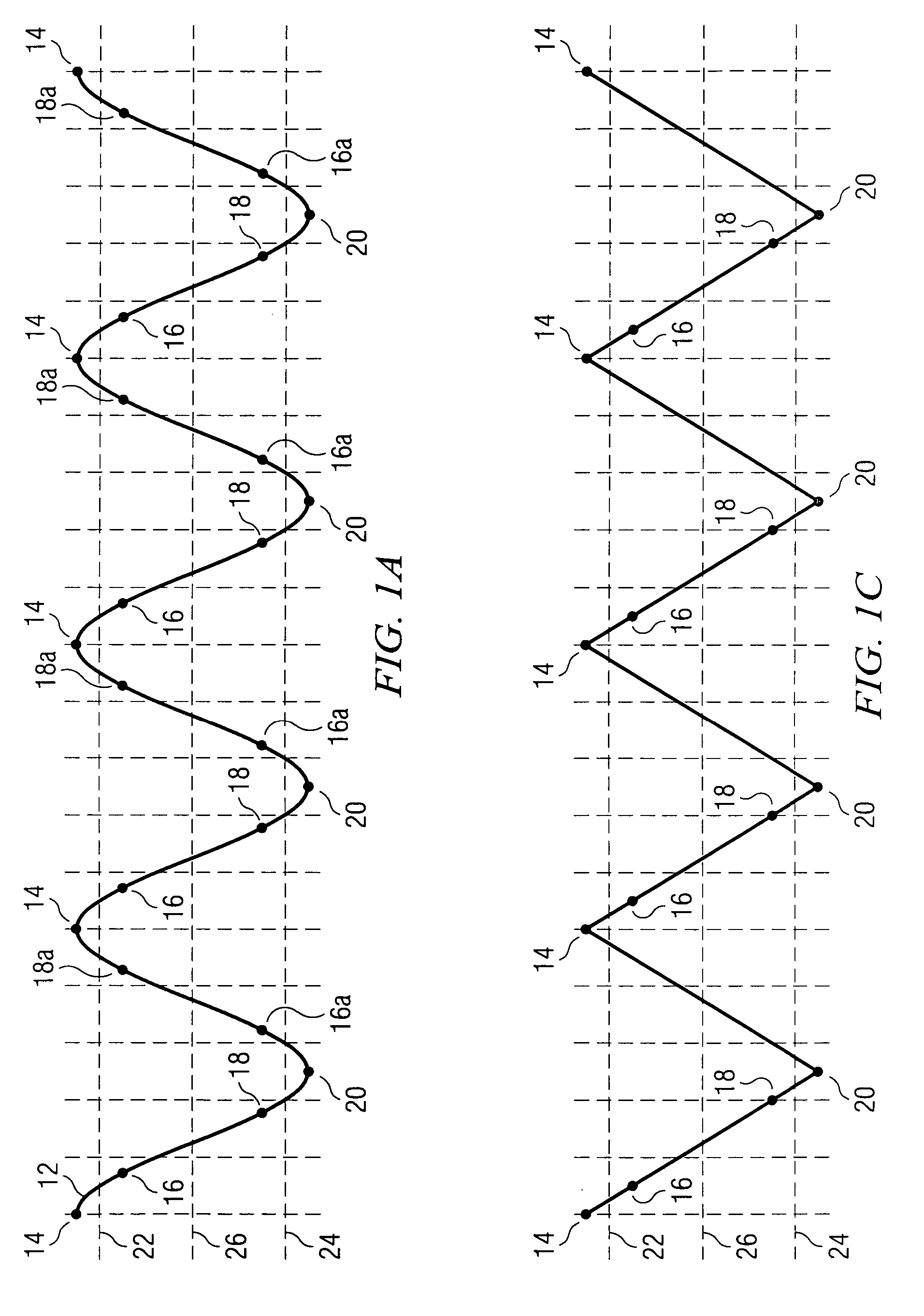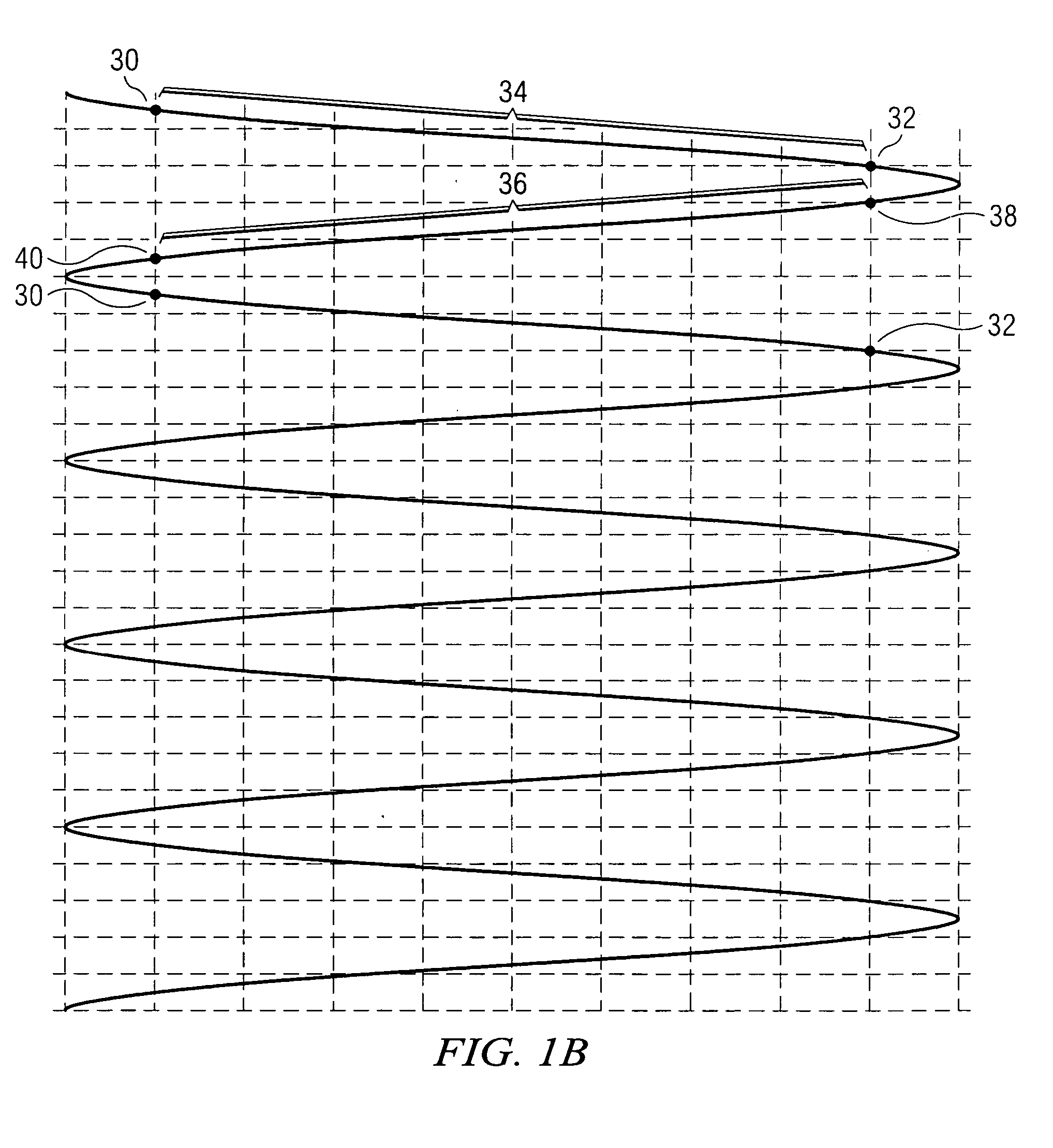Method for aligning consecutive scan lines on bi-directional scans of a resonant mirror
a resonant mirror and scan line technology, applied in the field of video display systems, can solve the problems of complex display of a corresponding raster scan mirror based system may be dim, and the scanning motion of high-speed resonant mirrors cannot be selected to have a frequency
- Summary
- Abstract
- Description
- Claims
- Application Information
AI Technical Summary
Benefits of technology
Problems solved by technology
Method used
Image
Examples
Embodiment Construction
[0025]The making and using of the presently preferred embodiments are discussed in detail below. It should be appreciated, however, that the present invention provides many applicable inventive concepts that can be embodied in a wide variety of specific contexts. The specific embodiments discussed are merely illustrative of specific ways to make and use the invention, and do not limit the scope of the invention.
[0026]Referring now to prior art FIG. 4, there is illustrated the interaction of a high speed horizontal scanning drive signal and a low speed (vertical) or scan line positioning signal used to control a prior art display formed by a raster scan, such as for example a CRT display. The terms “horizontal”, used with respect to scanning drive signals, and “vertical”, used with respect to the beam positioning signals, are for convenience and explanation purposes only, and it will be appreciated by those skilled in the art that the scan lines in a CRT display or a mirror based dis...
PUM
 Login to View More
Login to View More Abstract
Description
Claims
Application Information
 Login to View More
Login to View More - R&D
- Intellectual Property
- Life Sciences
- Materials
- Tech Scout
- Unparalleled Data Quality
- Higher Quality Content
- 60% Fewer Hallucinations
Browse by: Latest US Patents, China's latest patents, Technical Efficacy Thesaurus, Application Domain, Technology Topic, Popular Technical Reports.
© 2025 PatSnap. All rights reserved.Legal|Privacy policy|Modern Slavery Act Transparency Statement|Sitemap|About US| Contact US: help@patsnap.com



